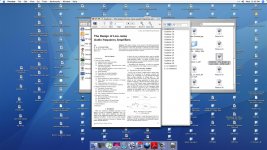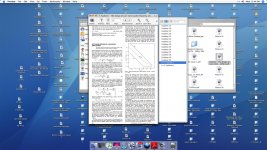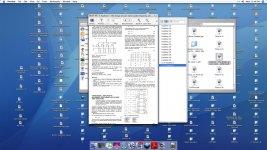Yeah, I agree as far as respecting IP, but my point is that you're not shooting the messenger (directly) inasmuch as the fact that such a book lives so publicly.
Hopefully I'm not misrepresenting you.
Hopefully I'm not misrepresenting you.
Last edited:
3rd edition is heavily revised so well worth the purchase price, including the very detailed analysis of 21st century low noise devices. I've still got my first edition from student days. The 3rd edition is on my xmas list 🙂
I own both the 2'nd and 3'rd editions, yet I hardly use them. Why? Because, unless it is an area that I am not familiar, they give only a simple consideration of any subject, and I already know more than they do about the subject at hand. Now, I am an experienced circuit design engineer and I have about 50 years of experience in many topics that I am interested in, such as low noise design. I might learn a fact or two about something, but little more, but that is me, not everyone here.
I strongly recommend this book to just about anybody, especially less experienced, non-specialists in actual analog circuit design. It is the most useful book I know for general electronics, similar to the ARRL Radio Amateur's Handbook, when I was assigned an RF power project, 30 years ago, was to me in the field of RF. Virtually a 'Godsend' at the time. I paid for my copies, but I am glad that an online version is now available for those who can't easily afford it. For non-specialists, the older version should be OK.
I strongly recommend this book to just about anybody, especially less experienced, non-specialists in actual analog circuit design. It is the most useful book I know for general electronics, similar to the ARRL Radio Amateur's Handbook, when I was assigned an RF power project, 30 years ago, was to me in the field of RF. Virtually a 'Godsend' at the time. I paid for my copies, but I am glad that an online version is now available for those who can't easily afford it. For non-specialists, the older version should be OK.
they give only a simple consideration of any subject, and I already know more than they do about the subject at hand.
Stunning, absolutely stunning.
If any university wants to post my designs as they would any other scholarly article and give me credit, I'm game.No, if mob rule says copyright period should be whatever they want they should live by it and they don't have any reason to complain about any cloning, reverse engineering, or whatever.
If any university wants to post my designs as they would any other scholarly article and give me credit, I'm game.
Are you really this dense?
The site is clearly a student or professor/class website and they copied the PDF into that folder. I am sure it would get taken down ASAP if they received a DMCA notice.
The URL includes: "~acm31201/Old Class Work/ECE 340/".
A .edu URL does not automatically make content on it legitimate.
If any university wants to post my designs as they would any other scholarly article and give me credit, I'm game.
Let's not get too carried away with this, like it or not IP laws are what they are and what someone or group feels is more "fair" does not matter. I don't want to point out yet again how little (actually nonexistent) protection copyright law has for the actual circuits or ideas contained in schematics. The code is there at some us.gov site you can read it yourself. The same holds for AoE, unless H and/or H patented the circuits in their book any company can put any of them into a commercial product without attribution or compensation. This goes BTW for anything posted on a chat site.
Last edited:
Now, IF I wanted more info on amplifier design, I would look more carefully at Bob Cordell's book on the subject. (I have it too.) Yet, it lacks a certain amount of 'math' especially calculus that can be very helpful sometimes.
Now I am somewhat of an exception to many of you. For example, I started looking into ultra low noise design about 50 years ago, and I was able to move forward, even then, because I had access to a QuanTech transistor noise analyzer at Ampex where I worked at the time. I was driven to find out everything that I could about low noise design, because I wanted to replace the simple Ortofon phono cartridge transformer (X50 gain) with something solid state. I already knew that in principle that it could be replaced, but LOW Rbb' devices were not specified at the time. 49 years ago, I found the 2N4401-3, and the 2N4405 Motorola transistors to actually have a much lower Rbb' than virtually any 'low noise' rated transistor at the time, and I knew about paralleling them from an earlier paper in 'Electronics Letters' that gave me the hint. However, just paralleling single sex parts makes for marginal electronics circuits, and I wanted more. It took literally years before I developed the Levinson JC-1 circuit that actually had 0.4 nV/rt Hz or so noise in 1973. People could not believe it at the time and insisted that we must have used a transformer. Of course, we just used 8 noise paralleled devices to get the low noise floor, OBVIOUS NOW, 44 years later. We patented the circuit, but Ortofon and others just stole the circuit from under me. So much for patent protection.
Now I am somewhat of an exception to many of you. For example, I started looking into ultra low noise design about 50 years ago, and I was able to move forward, even then, because I had access to a QuanTech transistor noise analyzer at Ampex where I worked at the time. I was driven to find out everything that I could about low noise design, because I wanted to replace the simple Ortofon phono cartridge transformer (X50 gain) with something solid state. I already knew that in principle that it could be replaced, but LOW Rbb' devices were not specified at the time. 49 years ago, I found the 2N4401-3, and the 2N4405 Motorola transistors to actually have a much lower Rbb' than virtually any 'low noise' rated transistor at the time, and I knew about paralleling them from an earlier paper in 'Electronics Letters' that gave me the hint. However, just paralleling single sex parts makes for marginal electronics circuits, and I wanted more. It took literally years before I developed the Levinson JC-1 circuit that actually had 0.4 nV/rt Hz or so noise in 1973. People could not believe it at the time and insisted that we must have used a transformer. Of course, we just used 8 noise paralleled devices to get the low noise floor, OBVIOUS NOW, 44 years later. We patented the circuit, but Ortofon and others just stole the circuit from under me. So much for patent protection.
I posted a link anyone could find. FROM a university! Who made a stink about this? You did!Let's not get too carried away with this,
Sorry if I don't look at a university website the same as Megadownloads.
I was aware of the low noise techniques being used for XXXXXX a bit before that. Probably still classified.
I was eating lunch at a local sandwich shop that is near the manufacturer of the XXXXXX product, two guys were discussing the yield problems on part YYYYYY. They for whatever reason assumed no one hearing their conversation would have a clue.
So should I have called their security staff to give them my sympathy for the low yields?
I was eating lunch at a local sandwich shop that is near the manufacturer of the XXXXXX product, two guys were discussing the yield problems on part YYYYYY. They for whatever reason assumed no one hearing their conversation would have a clue.
So should I have called their security staff to give them my sympathy for the low yields?
It took literally years before I developed the Levinson JC-1 circuit that actually had 0.4 nV/rt Hz or so noise in 1973. People could not believe it at the time and insisted that we must have used a transformer. Of course, we just used 8 noise paralleled devices to get the low noise floor, OBVIOUS NOW, 44 years later.
Of course if you have H&H you can read the work they have done characterising modern available and cheap devices and get under the 0.4nV/rt/Hz with a single NPN for each leg. Isn't progress great 🙂.
The PNPs in TAOE3rd_ed are lower noise than the NPNs. "a single NPN for each leg" is substantially worse than a single PNP for each leg, as anyone would know who has actually read TAOE3rd_ed would know.
And may God bless. As Red Skelton used to say after eviscerating people who needed it.
And may God bless. As Red Skelton used to say after eviscerating people who needed it.
Thanks Mark for your input about PNP transistors being lower Rbb' all else seemingly equal. It is because of the increased mobility of the N base material in the PNP transistor compared to the mobility of the P base material in an NPN transistor.
I first learned this about 50 years ago, when I first got access to the QuanTech noise analyzer. It wasn't in any handbook at the time, along with the part numbers as well, at the time. I originally found the 2N4403 and 2N4405 just by measuring them in the analyzer when they were first introduced. They were not listed as low noise devices at the time.
Of course, if you are willing to be 25-50 years behind the times, just get a handbook. '-)
I first learned this about 50 years ago, when I first got access to the QuanTech noise analyzer. It wasn't in any handbook at the time, along with the part numbers as well, at the time. I originally found the 2N4403 and 2N4405 just by measuring them in the analyzer when they were first introduced. They were not listed as low noise devices at the time.
Of course, if you are willing to be 25-50 years behind the times, just get a handbook. '-)
The PNPs in TAOE3rd_ed are lower noise than the NPNs. "a single NPN for each leg" is substantially worse than a single PNP for each leg, as anyone would know who has actually read TAOE3rd_ed would know.
And may God bless. As Red Skelton used to say after eviscerating people who needed it.
I know that, but I used the NPN example as the circuit has been made and measured as a MC amplifier. The Zetex NPN H&H recommend has an Rbb of less than 2Ohms so you can get IIRC 0.34nV/rtHz for a balanced stage. using a 1960s topology. Two transistors and two op-amps for lower noise than you actually need. I just figured something real as a stake in the ground 🙂
But we all know that the noise from something where an 8-leg is involved is much worse than that from 3-legs, even if it is lower 
Edit: just saving JC some typing here... ;-)
Jan

Edit: just saving JC some typing here... ;-)
Jan
Last edited:
- Status
- Not open for further replies.
- Home
- Member Areas
- The Lounge
- John Curl's Blowtorch preamplifier part II


